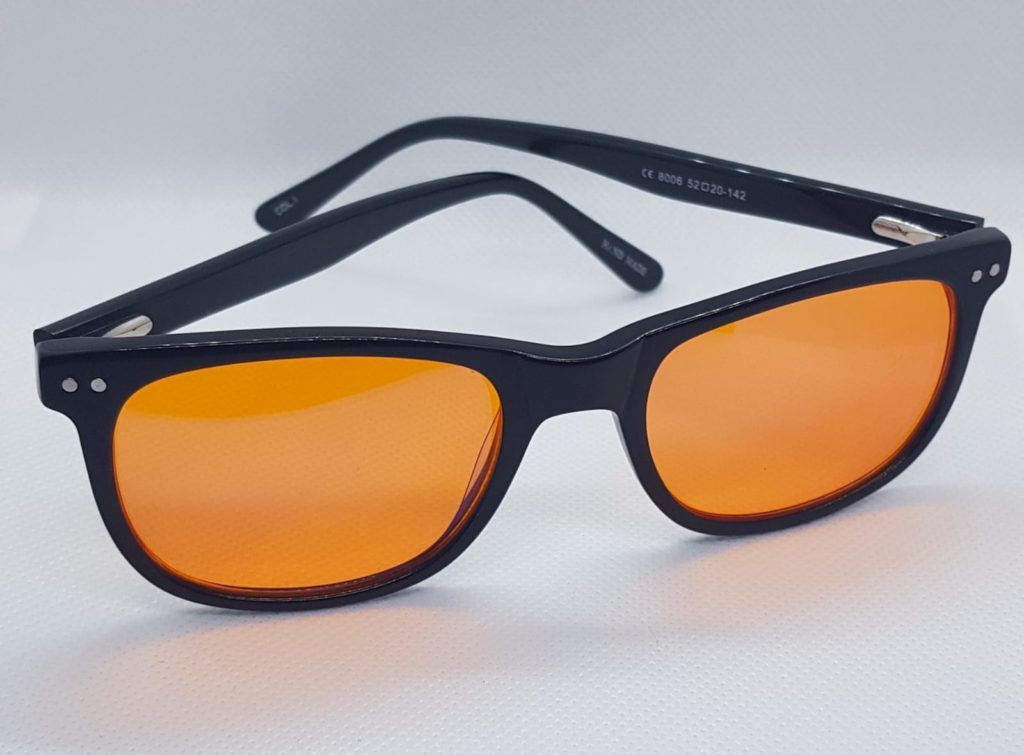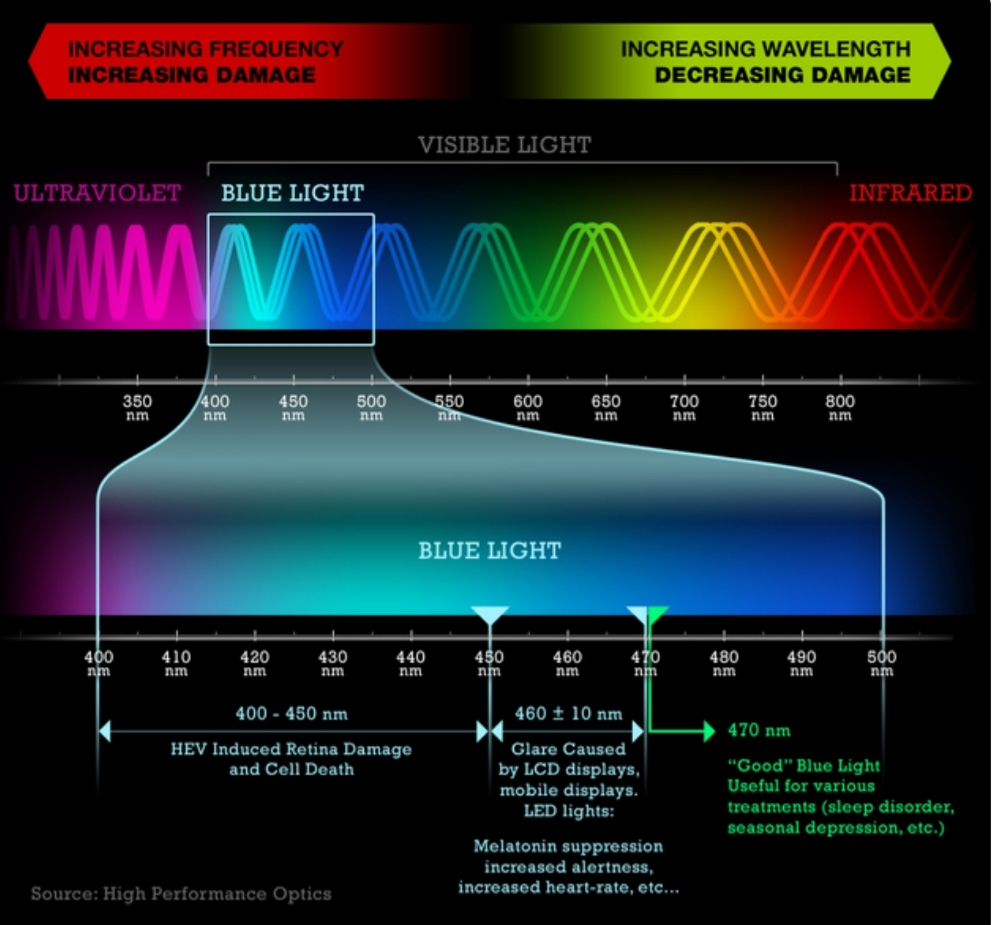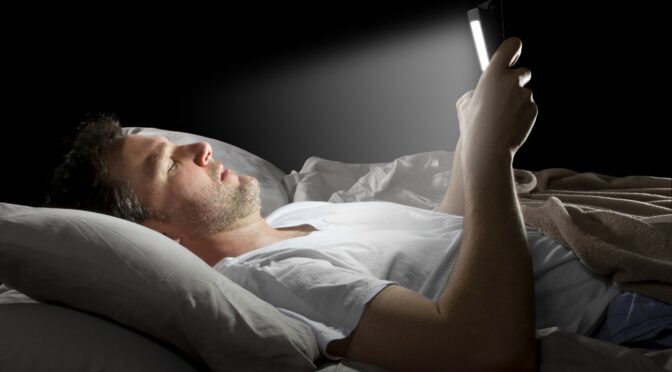
Too much blue light has been shown to disrupt your sleep rhythm and be detrimental to your health. The harm is done primarily through disturbances of the biological clock (1), but the high energy intensity of the blue light has also been shown to be potentially harmful to the eye and its function (2).To counteract the effects of blue light from screens, we at Biohacking Collective have developed our own glasses that block up to 96% of the blue spectrum.
Is blue light dangerous or why should I block this light?
Blue light is not dangerous and can also be useful and energizing for us. But here it is a lot about the right time of day and about finding a balance that works with the natural light cycle. Exposing yourself to blue light in the morning or in the morning is something that naturally signals alertness. But sitting in front of screens in an indoor environment with fluorescent lamps gives us far too much exposure of the blue spectrum. This large amount of blue light can cause eye strain and fatigue, which in the long run can lead to premature aging of the eye, so-called age-related degradation of the yellow spot (3).When you sit in front of the screen in the afternoon or evening, you will fool the brain into thinking that it is still day. This can lead to reduced melatonin production which in turn can lead to problems with sleep or reduced sleep quality.
The solution to this is either to reduce screen time before bedtime or to try to filter out the blue spectrum from the light. By wearing blue light glasses from Biohacking Collective, you can be sure that you are not exposed to too much harmful blue light. We recommend using that model with orange lenses about 3-4 hours before going to bed to optimize your sleep. Of course, this will not solve all your problems if you have insomnia but can be a step on the way.
What is blue light?
The sun’s light contains blue, red, yellow, green and orange light rays. Where visible light (700nm-380nm) goes from red to blue. Red light is the one that contains the least energy and blue is the most energy intensive within the visible spectrum. Blue light (380-500nm) is thus very energy intensive. This energy intensity means that more energy is required for the eyes to process the blue light.It has been found in several studies that this light intensity can lead to eye problems (5). These eye problems can eventually lead to rapid Age-Related Macular Disease.

Blue light and sleep.
Our sleep and the secretion of the sleep hormone melatonin is controlled by our naturally built clock so-called. the circadian rhythm (4). Melatonin production is regulated by the pineal gland which in turn is controlled by the body’s circadian rhythm. When we expose ourselves to blue light in the evening, this will inhibit our production of this important sleep hormone. Which in turn leads to poorer quality of sleep. However, there are also other effects of lower melatonin production as melatonin in turn breaks down into other important substances that can act as antioxidants (6).
(1)Hatori, M., Gronfier, C., Van Gelder, R. N., Bernstein, P. S., Carreras, J., Panda, S., Marks, F., Sliney, D., Hunt, C. E., Hirota, T., Furukawa, T., … Tsubota, K. (2017). Global rise of potential health hazards caused by blue light-induced circadian disruption in modern aging societies. NPJ aging and mechanisms of disease, 3, 9. doi:10.1038/s41514-017-0010-2
(2)Tosini, G., Ferguson, I., & Tsubota, K. (2016). Effects of blue light on the circadian system and eye physiology. Molecular vision, 22, 61-72.
(3) Z.-C. ZhaoY. ZhouG. TanJ. Li. Research progress about the effect and prevention of blue light on eyes December 2018
(4)Figueiro, M. G., & Rea, M. S. (2010). The effects of red and blue lights on circadian variations in cortisol, alpha amylase, and melatonin. International journal of endocrinology, 2010, 829351.
(5) https://www.health.harvard.edu/staying-healthy/blue-light-has-a-dark-side
(6) Anna-Rebekka Ressmeyer, Juan C. Mayo, Veronika Zelosko, Rosa M. Sáinz, Dun-Xian Tan, Burkhard Poeggeler, Isaac Antolín, Beata K. Zsizsik, Russel J. Reiter & Rüdiger Hardeland (2003) Antioxidant properties of the melatonin metabolite N1-acetyl-5-methoxykynuramine (AMK): scavenging of free radicals and prevention of protein destruction, Redox Report, 8:4, 205-213, DOI: 10.1179/135100003225002709

